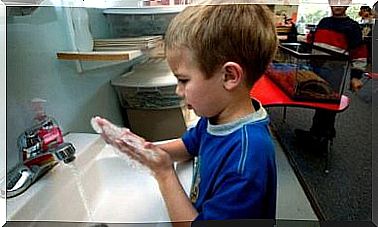How To Apply Gamification In The Classroom

The gamification or “ludicizzazione” is the use of some of the dynamics and mechanisms typical of a game that the game settings are unrelated. The presence of gamification in the classroom is becoming increasingly important within the educational process. Games are a fundamental part of the culture. As play becomes more and more important, so does the potential that games themselves have in transforming pupils’ school experiences.
Since gamification is so important in education, let’s see how it is possible to play in the classroom for educational purposes. There are many different pedagogical methods and opinions to achieve this result: we have chosen some concrete procedures useful in applying gamification in the classroom.
Gamification in the classroom: evaluating pupils
Identify the weak and problematic points
The identification of the weak and most problematic points presented by the students is of great help in determining which are the best gamification strategies to be adopted in the classroom. For example, if we notice that PowerPoint presentations tend to numb pupils, we can add interactive elements to them.
It is something like an open world video game , in which you choose your path to go freely. We can add notices at the bottom of each slide, so that pupils can choose the next one.
Probe the class
Teachers should analyze their class, before starting to work with pupils, so that they can determine the best way to motivate them. The purpose should be to understand and know the games that pupils dedicate themselves to, to take this aspect into account in the gamification to be organized in the classroom.
Define learning objectives in classroom gamification
To play with education, you need to set well-defined learning objectives. Learning goals must also include behavioral goals that help students understand concepts and develop skills.
An example would be to establish a concrete learning goal, trying to get pupils to master a specific skill by a concrete date. The goal of behavior may be to encourage students to put aside distractions in the classroom.
Structuring the gaming experience for learning
Create a different scoring system
Many pupils see their grades as the most distressing part of the school experience. Precisely for this reason, the gamification of education must include a modification of the way in which evaluations are presented, trying to emphasize progress, instead of errors.
In this way, in exams and homework it is possible to assign points to pupils in the traditional way or in the form of experience points (PE). It is also possible to assign PEs for completing extra-curricular tasks, for actively participating in lessons or for anything else that involves a learning commitment on the part of the pupil.
Example: A pupil who receives 7.5 in an exam can receive 7,500 XP. To these XP we will add the points he earned during the course. This way students will have a clear point of reference and will know what they have learned and achieved.
Use layers
For professors, the themes and teaching units represent clear subdivision elements. The pupils, however, will probably understand them more clearly if they have the consciousness to move to the next level, just like in games. In order to pass one level and reach the next, it is necessary to overcome certain challenges.

For this purpose, concrete tasks must be defined, such as the requirements that must be met beforehand, in order to move on to the next stage. If pupils do not complete the task, do not actively participate in the lessons and do not complete the tests, they will not be ready to participate in the challenges that will allow them to move to the next level.
Gamification in the classroom: having resources
Create a manual and organize teams
The creation and distribution of an instruction manual is a means of getting pupils to approach the gamification of learning. Both digital and physical instruction manuals can be found in virtually every game. They explain how to play and progress, sometimes including tips and tricks.
Our educational version must contain information such as:
- The way the levels work.
- The types of tasks pupils will tackle.
- The new scoring system, including ways in which XP can be earned.
- How can you receive rewards and what types of rewards are available.
This will help pupils to have a frame of reference that will explain to them what they need to do to be successful in a playful learning environment.
Make progress visible
Visibly showing pupils’ progress and showing them what they have achieved since the beginning of the course is an important social element in classroom gamification . It serves to foster a sense of belonging to the community.
For this purpose, it is possible to create and share a histogram that shows each student’s progress in reaching the domain of a given skill. Whenever a student achieves a score in an exam or completes their assignments, their skill histogram can be updated with the amount of XP they have earned.
Offer rewards
To combine play and learning in a way that appeals to pupils, you need to think about rewards. The survey shows that reward-based systems in gamified education encourage students to recognize their achievements and continue to make progress.

If we think of most modern video games, we can see that they all have one thing in common: players receive rewards for completing certain tasks. The harder the task, the greater the reward.
In the classroom, rewards can be represented, for example, by small badges that are earned for completing a small specific task, and larger ones for actively participating in the development of a topic. All this serves to incentivize and motivate pupils to seek new goals and continue to advance.
Conclusions for gamification in the classroom
Nowadays, gamification in the classroom is successful because pupils become more willing to actively participate in its realization. Naturally, they become interested in the game in question, immediately understanding and respecting its mechanics and rules.








